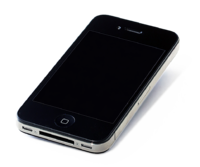The DOM value "window.devicePixelRatio" and the CSS property "device-pixel-ratio" will become variable values
 More than two years have passed since the start of sales of iPhone 4 in the summer of 2010, and over the past two years, site builders have become accustomed to checking the window.devicePixelRatio value with javascript (or using the device-pixel-ratio media query in CSS) as a simple and simple-minded tool that allows you to immediately find out whether the site is running on a retina display (retina display) or not. If the devicePixelRatio value is two , then we have a retinal display (the fourth iPhone, the fourth iPod Touch, the third iPad, or newer devices, or the MacBook Pro with Retina Display laptop); if the value of devicePixelRatio is equal to one (or not determined), then we have the usual definition display.
More than two years have passed since the start of sales of iPhone 4 in the summer of 2010, and over the past two years, site builders have become accustomed to checking the window.devicePixelRatio value with javascript (or using the device-pixel-ratio media query in CSS) as a simple and simple-minded tool that allows you to immediately find out whether the site is running on a retina display (retina display) or not. If the devicePixelRatio value is two , then we have a retinal display (the fourth iPhone, the fourth iPod Touch, the third iPad, or newer devices, or the MacBook Pro with Retina Display laptop); if the value of devicePixelRatio is equal to one (or not determined), then we have the usual definition display.A bit more complicated, compared to Apple’s, is the accounting of devices working under Android: there you have to perceive fractional values that are not equal to one or two.
But these minor differences do not change the picture as a whole: everyone is accustomed to thinking about the value of the devicePixelRatio value as a property of the device that remains unchanged on the same mobile phone (or tablet or laptop). In particular, it was on this that everything was based, all the recipes from Habrahabra blogo recordings “ Adapt graphics to the Retina screen ”, “ Recognize
')
But November 2012 has come, and it is time to give up this habit, it is time to critically reconsider previous recipes. I'll tell you why.
The first bell rang when
The second bell rang when support for devicePixelRatio appeared in Firefox version 18 — this value was also set there as dependent on page magnification.
The third and last bell rang when W3C participants on the
Everything, gentlemen readers. You can forget forever
It is clear that this news has two sides - good and bad.
Probably, not all site builders will be pleased that previous attempts to identify a device by its devicePixelRatio value will not always be successful in the future.
Probably, not all website builders will be pleased that previously it was enough to read devicePixelRatio with a javascript at the very beginning of working with a document (on a load
On the other hand,
It is hoped that in the future this particular nuance of site building will be even simpler if the February proposal for the image-set property is adopted:
selector { background: image-set(url(foo-lowres.png) 1x, url(foo-highres.png) 2x) center; } Not to mention that it was implemented in WebKit in March .
It is inspiring. The future is starting to look radiant.
Notice that now, along with doubling the size of the picture, it becomes possible to triple, quadruple, and so on - as the reader is ready to twist the increase and as the site builder is ready to ensure that larger versions of the same illustration are provided.
Source: https://habr.com/ru/post/159419/
All Articles